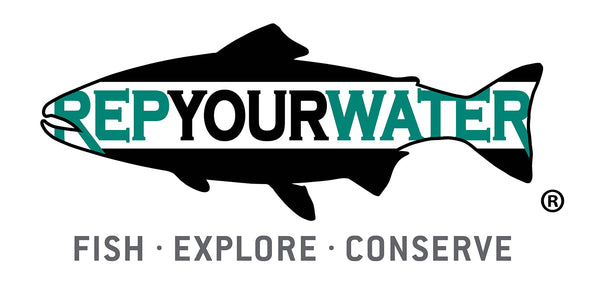Conservation Snapshot: Citron Creek, Wisconsin
By: Ryan Roberts, National Fish Habitat Partnership
The Driftless Area Restoration Effort (DARE) is one of 20 partnerships under the National Fish Habitat Partnership (NFHP). DARE is also a Conservation Partner of RepYourWater, through their support of Beyond the Pond, the 501c3 Organization established to benefit the National Fish Habitat Partnership.
In September 2020, DARE utilized a $3,500 donation from RepYourWater through their inclusion in the 3% for Conservation Partners Program. This funding went directly to fund an on-the-ground habitat conservation project in Citron Creek, Wisconsin.
Project Background:
Historic flooding events have caused severe streambank erosion on the Donald Dudenbostel farm located on Citron creek, near Steuben, Wisconsin. An estimated 1192 tons of soil is lost per year from 8 streambank sites. The Citron Creek project will stabilize 2975 ft. of eroding streambank by installing habitat structures, including; cross-channel logs, random boulders, log deflectors, and rootwads. These structures will benefit brook trout and provide some non-game species habitat.
This project can also expand the brook trout population into this improved stream section since they are present in the watershed tributaries. This project could potentially spur some additional similar projects in the area that would reduce stream sediment, increase the amount of quality fish habitat, and provide additional public fishing access to streams.
Project Challenges:
Parts of Citron Creek have suffered from severe flooding over the past 10+ years, causing streams and tributaries to be flushed of woody instream habitat, eliminating good over-head cover, and creating unstable high sediment yielding streambanks. Due to this flooding, the only protection provided to fish in some parts of the stream is in the Creek's deep pools.
Long Term Benefits:
This project will install more stable woody structures with habitat niches increasing fish survival. Sediment loads to the stream and spawning areas will be reduced. An estimated 1,000 tons of soil loss occurs annually from these sites. Stabilizing these sites will prevent 1,000 lbs. of phosphorous from being discharged into the stream long-term.
Proposed Project Accomplishments:
- Improved through streambank stabilization (rock riprap and streambank shaping and seeding) 2,600 ft. of the stream.
- Created just over 1 mile of perpetual public fishing access on a class III trout stream. Stream habitat installed; 24 random boulders, 1 rock weir, 1 cross-channel log, and 32 root wads.
- Removed over 3000 cubic yards of soil from the floodplain allowing reconnection to the floodplain.
- Increased flood-carrying capacity by sloping streambanks and hauling spoil off-site.
- Non-game species such as shorebirds, turtles, and frogs will also benefit from the habitat structures installed.
- Improvements to the stream are expected to increase significantly stream carrying capacity since the overhead cover has been created.
- Training new young contractors on how to install rock riprap and trout stream habitat structures.
SW News4U Article about Citron Creek: https://www.swnews4u.com/local/agriculture/dudenbostel-familys-hard-work-results-in-successful-streambank-restoration/
About the National Fish Habitat Partnership: Since 2006, the National Fish Habitat Partnership has supported over 1,000 projects benefiting fish habitat in all 50 states. The National Fish Habitat Partnership works to conserve fish habitat nationwide, leveraging federal, state, tribal, and private funding resources to achieve the greatest impact on fish populations through priority conservation projects of 20 regionally-based Fish Habitat Partnerships. For more information, visit: http://fishhabitat.org/

